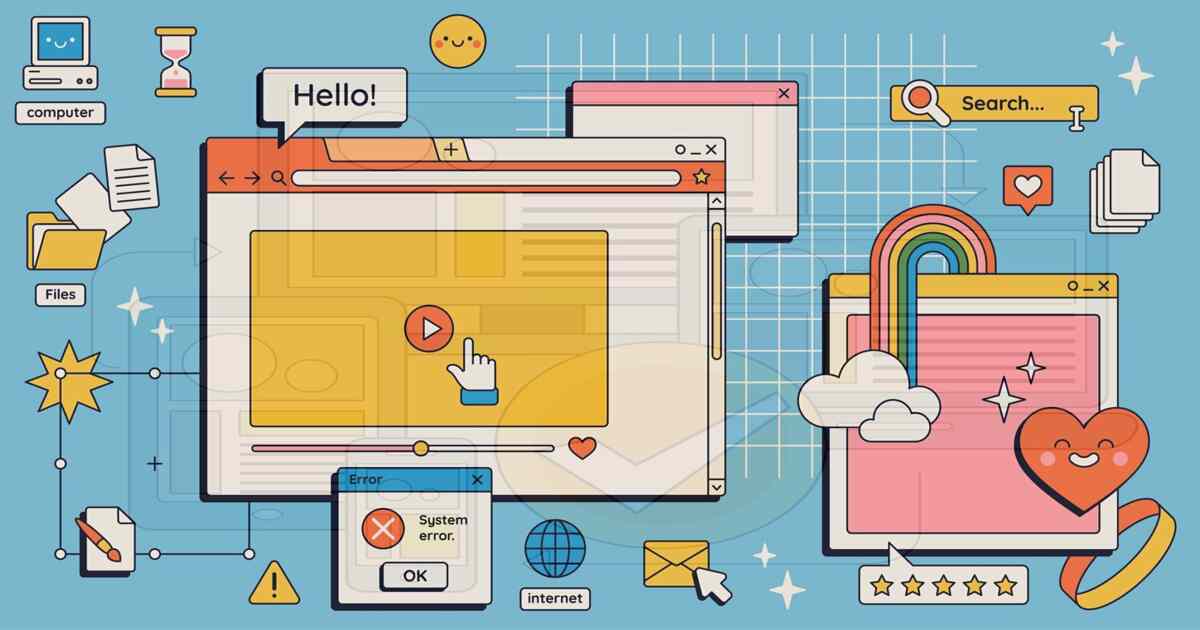A compelling online presence begins with stellar website design in the fast-paced digital landscape. As businesses strive to make their mark in the virtual realm, the importance of an aesthetically pleasing and user-friendly website cannot be overstated. Effective website design goes beyond mere visual appeal; it is a strategic blend of creativity and functionality (web design).
A well-crafted website is a virtual storefront, offering visitors a seamless and engaging experience. The navigation should be intuitive, guiding users effortlessly through the site’s content.
Incorporating the latest trends in website design is essential to stay ahead of the curve. The design landscape evolves from minimalist layouts to bold color schemes, and a modern website must reflect these changes. Additionally, optimizing for speed is crucial in today’s fast-paced online environment, as users demand swift loading times.
Furthermore, a website serves as a brand ambassador, conveying the essence of a business through visuals and content. Consistent branding elements and high-quality graphics and multimedia contribute to a memorable and impactful online presence.
Collaborating with a skilled website design professional or agency is advisable to achieve these goals. Their expertise ensures your website meets and exceeds user expectations, fostering a positive online experience that translates into business success.
User Interface Design
In the dynamic realm of digital experiences, user interface design is the linchpin between technology and user engagement. A well-crafted user interface (UI) is not just about aesthetics; it’s a strategic orchestration of elements that seamlessly guides users through an interactive journey.
The key to effective user interface design lies in its user-centric approach. Consistency in design elements, such as icons, colors, and typography, fosters familiarity and enhances the overall user experience.
Moreover, responsive design is paramount in today’s multi-device landscape. Streamlined navigation further simplifies user interactions, reducing friction and enhancing usability.
Integrating cutting-edge technologies, such as micro-interactions and animations, adds a layer of sophistication to UI design. These subtle yet impactful elements contribute to a dynamic and engaging user experience, immersing visitors in the digital interface.
Collaboration between UI designers and other stakeholders, such as developers and product managers, is crucial for a holistic approach to design.
In essence, user interface design is the gateway to a digital world where aesthetics harmonize with functionality, creating an immersive and user-centric environment. Elevate your digital presence by investing in thoughtful and innovative UI design that resonates with your audience and defines a new standard of interactive excellence.
Interface Design (web design)
In the ever-evolving landscape of digital experiences, interface design stands as the pivotal bridge connecting users to technology. Interface design, a multifaceted discipline, encompasses the art and science of crafting intuitive, visually appealing, and functional interfaces that elevate user interactions to new heights.
At its core, interface design involves deliberately arranging elements like buttons, menus, and navigation bars to create a seamless and efficient user experience. The emphasis is on aesthetics and usability, ensuring users can navigate the digital environment effortlessly.
Responsive interface design is paramount in the era of diverse devices. Interfaces must adapt seamlessly to various screen sizes, from desktops to tablets, and optimize experience across platforms. Strategic placement and thoughtful design choices achieve a harmonious fusion of form and function.
Furthermore, staying abreast of emerging design trends is essential to keep interfaces contemporary and engaging. From minimalist design principles to bold and innovative visual elements, interface design evolves to meet changing user preferences and expectations.
Collaboration between interface designers, developers, and other stakeholders is integral to the design process. Continuous feedback loops and usability testing refine and enhance interfaces, ensuring they evolve with the ever-shifting landscape of technology and user behavior.
Interface design creates digital environments that captivate users, offering functionality and an immersive and delightful journey. Embrace the power of thoughtful interface design to forge meaningful connections between users and the digital world, setting new standards for user-centric innovation.
Responsive Design
In the contemporary digital landscape, responsive design has emerged as a cornerstone of web development, offering a solution to the diverse array of devices users employ to access online content. Responsive design, a dynamic approach to website and application development, ensures the user experience remains seamless and consistent across various screen sizes and devices.
At its core, responsive design is characterized by flexible layouts and fluid grids that adapt to the dimensions of the user’s device. Whether it’s a desktop, tablet, or smartphone, the content automatically adjusts, eliminating the need for separate designs for different platforms. This adaptability streamlines development and enhances user satisfaction by delivering a visually cohesive experience.
The significance of responsive design extends beyond convenience; it directly impacts search engine rankings. Search engines like Google prioritize mobile-friendly websites. Responsive design, therefore, contributes to improved visibility and accessibility in search engine results.
Moreover, responsive design aligns with the modern user’s expectation of accessibility. With the prevalence of mobile browsing, users demand a consistent and enjoyable experience, regardless of the device they choose. By embracing responsive design principles, businesses and developers are committed to user-centricity, fostering positive interactions and brand loyalty.
Mobile Optimization (web design)
In the era of ubiquitous mobile connectivity, mobile optimization has become a paramount consideration for businesses seeking to establish a solid online presence. Mobile optimization involves tailoring websites and applications to ensure a seamless and user-friendly experience on smartphones and other mobile devices.
A key aspect of mobile optimization is responsive design, which dynamically adapts content to varying screen sizes. This adaptability is crucial for engaging the growing number of users accessing the internet through mobile devices. By implementing responsive design principles, businesses enhance user experience and boost their search engine rankings as search algorithms increasingly favor mobile-friendly websites.
Mobile users, often on the go, demand swift access to information. Optimizing images, leveraging browser caching, and minimizing unnecessary elements contribute to faster loading times, reducing bounce rates, and keeping users engaged.
Furthermore, streamlined navigation is integral to effective mobile optimization. Clear and concise menus, strategically placed calls-to-action, and touch-friendly interfaces provide a seamless user journey. With users frequently multitasking on their mobile devices, a well-optimized mobile experience ensures they can easily navigate and interact with the content.
Mobile optimization is not merely a technical consideration but a strategic imperative. Businesses prioritizing the mobile user experience demonstrate a commitment to accessibility, responsiveness, and user satisfaction, ultimately solidifying their digital presence in an increasingly mobile-centric world.
Graphical User Interface
In digital interaction, a Graphical User Interface (GUI) is the visual gateway that facilitates seamless communication between users and software applications. It serves as the bridge between the complexities of underlying code and the intuitive experiences users crave.
A Graphical User Interface comprises visual elements such as icons, buttons, and menus.
The evolution of Graphical User Interfaces has seen a shift from static and practical designs to dynamic and visually engaging experiences. Modern GUIs leverage a combination of color schemes, typography, and multimedia elements to create an immersive user experience (web design). Integrating animations and micro-interactions enhances the overall usability and adds a layer of sophistication to the interface.
Accessibility is a critical consideration in GUI design, ensuring that users of all abilities can navigate and interact with the interface seamlessly. Striking a balance between simplicity and functionality, a well-designed GUI guides users through complex tasks, making software applications more approachable and user-friendly.
In conclusion, the Graphical User Interface is the face of digital interactions, shaping user perceptions and experiences.





